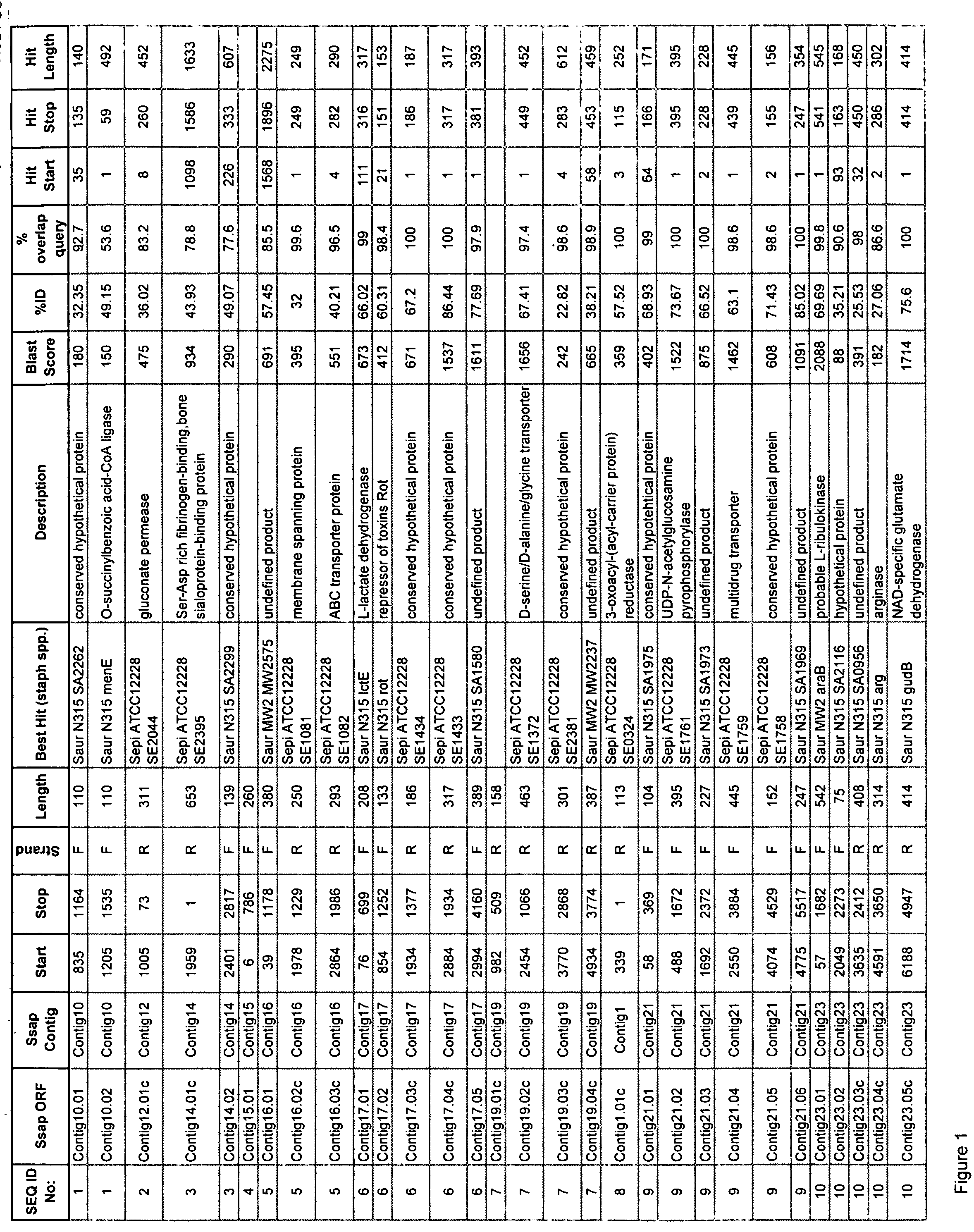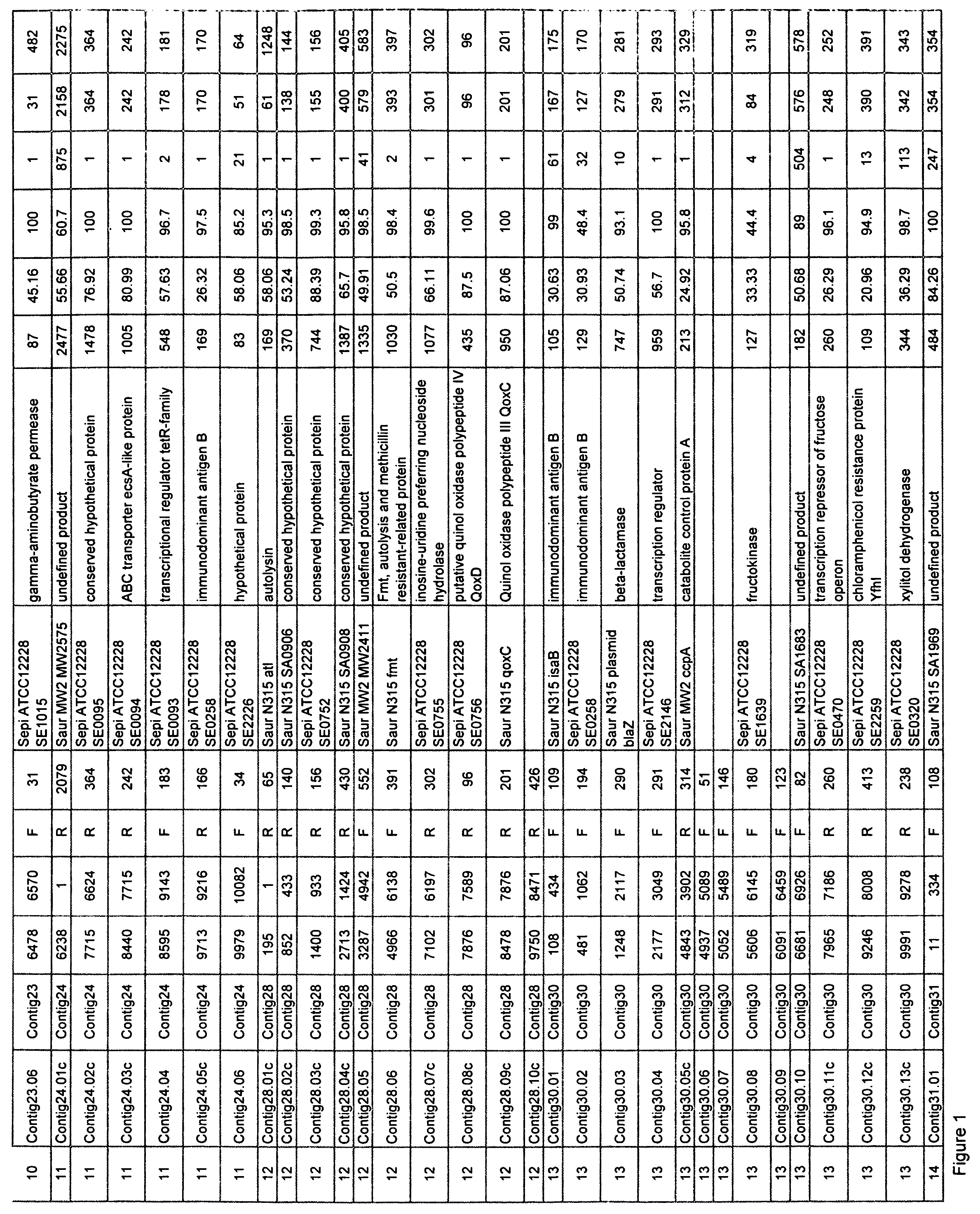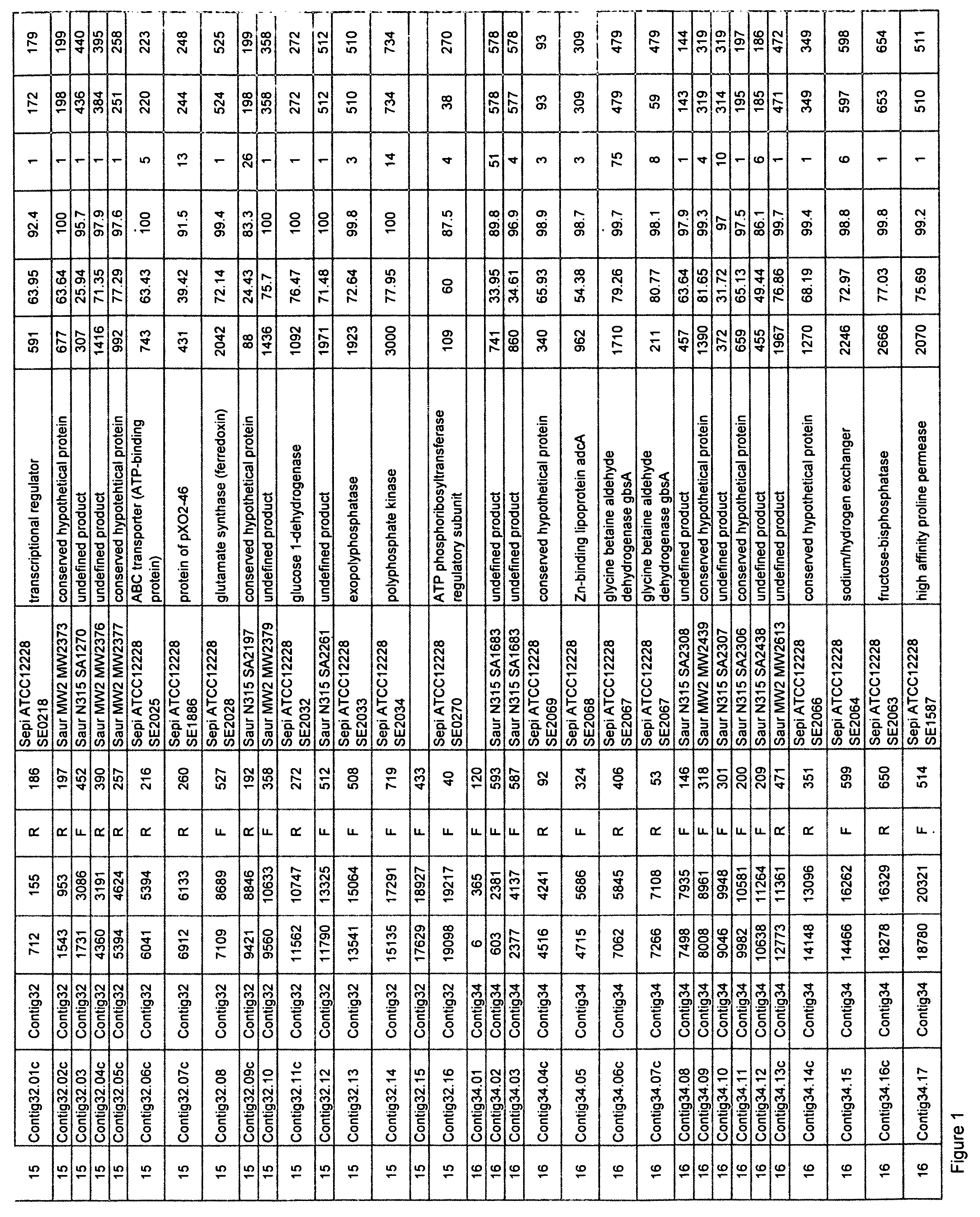Staphylococcus saprophyticus nucleic acids and polypeptides
a technology of staphylococcus saprophyticus and nucleic acids, applied in the field of isolating nucleic acids and polypeptides, can solve the problems of more difficult treatment, difficult correct diagnosis, formation of bladder or kidney stones,
- Summary
- Abstract
- Description
- Claims
- Application Information
AI Technical Summary
Problems solved by technology
Method used
Image
Examples
example 1
Experimental Design and Methods
Random Sequencing Strategy and Library Construction.
[0258] The overall approach to sequencing bacterial genomes has been well established since first described by Fleischmann et al. (Science 269:449-604, 1995). The theory of the approach is centered behind the Lander and Waterman (Genomics 2:231-239, 1988) hypothesis of a Poisson distribution that describes the probability that any given base will not be sequenced after a certain amount of random sequence has been generated. Typically, five to six fold coverage of a genome sequenced randomly yields<1% of the total genome unrepresented.
[0259] Chromosomal DNA from a recent clinical isolate of Staphylococcus saprophyticus (given the strain name of ARC 1259) was prepared from a fresh overnight culture that had been incubated at 37° C. on blood agar plates. The strain had been purified from a single colony to ensure purity. Bacterial colonies were collected and processed using a commercial genomic DNA i...
example 2
Construction and Operation of DNA Microarrays
[0262] The sequences of the invention may additionally be used in the construction and application of DNA microarrays (the design, methodology, and uses of DNA arrays are well known in the art, and are described, for example, in Schena, M. et al. (1995) Science 270: 467-470; Wodicka, L. et al. (1997) Nature Biotechnology 15: 1359-1367; DeSaizieu, A. et al. (1998) Nature Biotechnology 16: 45-48; and DeRisi, J. L. et al. (1997) Science 278: 680-686).
[0263] DNA microarrays are solid or flexible supports consisting of nitrocellulose, nylon, glass, silicone, or other materials. Nucleic acid molecules may be attached to the surface in an ordered manner. After appropriate labeling, other nucleic acids or nucleic acid mixtures can be hybridized to the immobilized nucleic acid molecules, and the label may be used to monitor and measure the individual signal intensities of the hybridized molecules at defined regions. This methodology allows the s...
example 3
Analysis of the Dynamics of Cellular Protein Populations (Proteomics)
[0268] The genes, compositions, and methods of the invention may be applied to study the interactions and dynamics of populations of proteins, termed ‘proteomics’. Protein populations of interest include, but are not limited to, the total protein population of S. saprophyticus (e.g., in comparison with the protein populations of other organisms), those proteins which are active under specific environmental or metabolic conditions, or those proteins which are active during specific phases of growth and development.
[0269] Protein populations can be analyzed by various well-known techniques, such as gel electrophoresis. Cellular proteins may be obtained, for example, by lysis or extraction, and may be separated from one another using a variety of electrophoretic techniques. Sodium dodecyl sulfate polyacrylamide gel electrophoresis (SDS-PAGE) separates proteins largely on the basis of their molecular weight. Isoelect...
PUM
| Property | Measurement | Unit |
|---|---|---|
| pH | aaaaa | aaaaa |
| Tm | aaaaa | aaaaa |
| nucleic acid | aaaaa | aaaaa |
Abstract
Description
Claims
Application Information
 Login to View More
Login to View More - R&D
- Intellectual Property
- Life Sciences
- Materials
- Tech Scout
- Unparalleled Data Quality
- Higher Quality Content
- 60% Fewer Hallucinations
Browse by: Latest US Patents, China's latest patents, Technical Efficacy Thesaurus, Application Domain, Technology Topic, Popular Technical Reports.
© 2025 PatSnap. All rights reserved.Legal|Privacy policy|Modern Slavery Act Transparency Statement|Sitemap|About US| Contact US: help@patsnap.com



